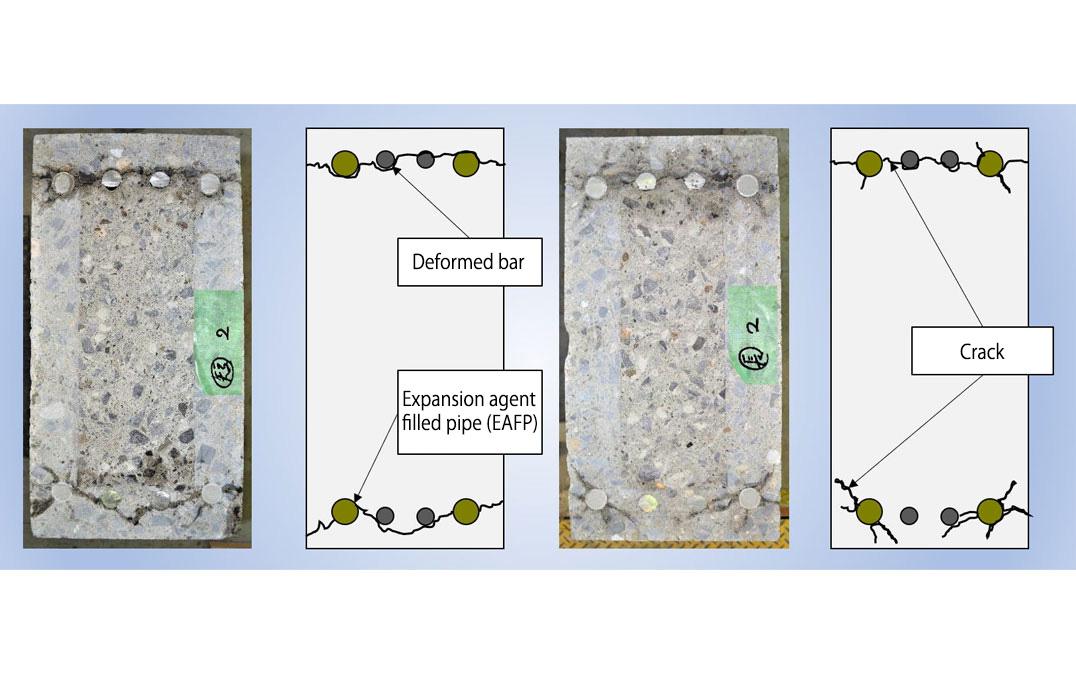Research News
Infrastructure Deterioration Measurements Made More Reliable

Researchers from the University of Tsukuba have developed an unambiguous means of quantitatively measuring the deterioration of reinforced concrete structures. This work will help construction professionals provide accurate safety measurements
Tsukuba, Japan—The maintenance of infrastructure is a priority for many administrations. However, current electrochemical-based methods of quantifying the deterioration of reinforced concrete can lead to ambiguous interpretations. Now, researchers from the University of Tsukuba have removed this ambiguity and improved the reliability of crack width measurements as a proxy for the underlying causes of this deterioration.
High-profile building collapses and ongoing efforts to contain nuclear waste highlight the need to accurately measure the deterioration of reinforced concrete in infrastructure. A common means of doing so is to measure the width of surface cracks in the infrastructure being tested. Unfortunately, the laboratory electrochemical tests that are used to numerically relate crack width to the underlying damage to the infrastructure can be unreliable.
To better understand the factors that contribute to crack width, Professor Toshiyuki Kanakubo and colleagues prepared reinforced concrete blocks that each contained an aluminum pipe filled with an expansion agent. This procedure enables a simulation of corrosion-induced expansion of a bonded reinforcement bar (i.e., a rebar). Prior research by Professor Kanakubo and coworkers indicated that this expansion is the main contributor to deterioration of the bond between the concrete and the metal reinforcements. Thus, the researchers set out to further investigate this hypothesis, as well as the role of the stirrups (a type of rebar that holds other rebars together) in the aforementioned deterioration. As Professor Kanakubo points out, "electrochemical approaches for simulating rebar expansion are problematic. Variations in the corrosion rate and loss of rebar sections add ambiguity to interpretations of bond degradation caused by corrosion."
Their research indicates that with increasing crack width, the bond strength decreased substantially in reinforced concrete. Adding reinforcement stirrups decreased the deterioration of the bond strength. Additionally, the researchers developed a mathematical equation that was useful for numerically relating the deterioration of the bond strength to the crack width and the stirrup ratio (the ratio of the cross-sectional area of the stirrups to that of concrete), which aligns with published experimental data.
"A rebar of a given corrosion level can correspond to a wide range of crack widths," explains Professor Kanakubo. "Our findings will increase the reliability of visual indicators of reinforced concrete deterioration."
This work succeeded in improving predictions of the underlying causes of the deterioration of reinforced concrete, based on the induced crack width. Applications of these findings to infrastructure may enable more reliable warnings of catastrophic failure in time to undertake corresponding remediation.
###
This study was supported by the Japan Society for the Promotion of Science KAKENHI Grant Number JP21H01472.
Original Paper
The article, "Residual bond strength in reinforced concrete cracked by expansion agent filled pipe simulating rebar corrosion," was published in Case Studies in Construction Materials at DOI: 10.1016/j.cscm.2022.e01565
Correspondence
Professor KANAKUBO Toshiyuki
Faculty of Engineering, Information and Systems, University of Tsukuba
Related Link
Faculty of Engineering, Information and Systems (in Japanese)




